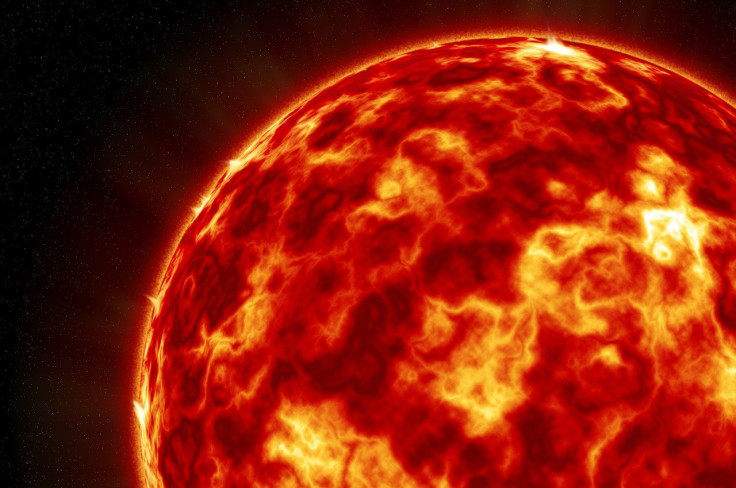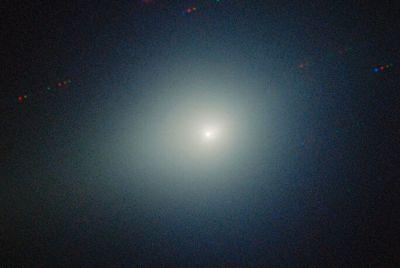3I/ATLAS 'Alien Mothership' Rumours: Harvard Scientist Says Comet Could Use Sun's Gravity to Target Earth
Avi Loeb has sparked debate by suggesting the object could be an alien mothership

A Harvard scientist has ignited speculation, claiming that a comet currently under observation might not be a mere icy rock. The object, designated 3I/ATLAS, has sparked 'alien mothership' rumours, with the professor suggesting it could harness the Sun's gravity to propel itself and potentially set a course straight for Earth.
This extraordinary claim raises questions about the origins and true nature of this celestial visitor.
This event will also help settle the ongoing speculation that the object might be an 'alien mothership'. So, what exactly can observers expect to uncover from 3I/ATLAS during its solar flyby?
The interstellar object 3I/ATLAS is nearing its closest approach to the Sun, and this meeting will alter the celestial body significantly. The widespread chatter about it being an 'alien mothership' will likely be resolved once this transit is complete. What, then, should we look for when this visitor engages with the Sun?
Closest Solar Approach of 3I/ATLAS
The interstellar comet 3I/ATLAS is fast approaching its nearest point to the Sun. This enigmatic traveller will hit perihelion on 29 October, a moment that could completely alter the comet's condition. While researchers worldwide are sure it is a comet, the notion that it might be an alien vessel is also spreading. In what ways will its solar brush change 3I/ATLAS?
Comet Activity Near the Sun
Comets usually begin to release gas and dust once they get close to the Sun. Energy and light from the star cause these frozen objects to turn directly into vapour. Ice on the main body of the comet, called the nucleus, pushes gas and particles away from it.
3I/ATLAS is a mystery interstellar object noted for its hyperbolic path toward the Sun and very high speed relative to the Solar System. In mere days, #3IATLAS promises to yield new information, and perhaps, new questions. I appeared on @NEWSMAX to discuss these developments. pic.twitter.com/LP7UQgTplA
— Dr. Michio Kaku (@michiokaku) October 26, 2025
The cloud around it grows larger and shines more brightly, and this action also causes the freed matter to form a visible tail pointing away from the Sun.
3I/ATLAS: Post-Solar Conjunction Perihelion
At present, 3I/ATLAS is concealed within the Sun's brightness, making it unseen from our planet. On 29 October, it will reach its closest approach to the star, a meeting that will significantly alter it. According to NASA, the comet's 210-million-kilometre distance from the Sun will make it exceptionally energetic.
The Drastic Change in 3I/ATLAS's Post-Solar Appearance
This intense action will transform its appearance when seen again next month. Instruments here on the planet and orbiting in space will record 3I/ATLAS as a significantly larger and more brilliant object. The fresh pictures will contrast starkly with every previous photograph of the interstellar comet taken since 1 July. Therefore, anticipate improved visuals.
Two Spacecraft to Encounter 3I/ATLAS's Tail
The journey of 3I/ATLAS towards the Sun will also be a significant event for several reasons, as certain human-made space probes will have the opportunity to observe it and gather new details about the object. From 25 October to 6 November, the European Space Agency's Hera spacecraft and NASA's Europa Clipper could pass across the comet's tail of ions.
3I/ATLAS Exhibits a 56,000 km-long Ion Tail
The interstellar comet 3I/ATLAS has an ion tail that extends 56,000 kilometres. The European Space Agency's Hera mission, which is heading toward the Didymos double asteroid system, may cross the path of the comet between 25 October and 1 November.
3I/ATLAS UPDATE
— Global𝕏 (@GlobaltrekX) October 26, 2025
Michio Kaku stated:
'This week on 30th October they're going to track it to see if it picks up extra energy whilst it whizzes around the sun, if it picks up extra energy on its flyby it could clitch it as being extraterrestrial intelligent life'. pic.twitter.com/8XWsdY8F2P
Concurrently, NASA's Europa Clipper, en route to Jupiter's moon, is anticipated to traverse the tail from 30 October to 6 November. The reported length of this ion tail, 56,000 km, is based on data collected by the Gemini observatory.
The JUICE Spacecraft to Observe 3I/ATLAS from Behind the Sun
The ESA Jupiter Icy moons Explorer (JUICE) will be positioned to observe 3I/ATLAS during November. At this time, both the spacecraft and the comet will be on the opposite side of the Sun from Earth. However, due to the transmission equipment used by JUICE, the collected data may not be available until February next year.
Could 3I/ATLAS Utilise the Sun's Gravity to Swing Toward Earth?
Harvard scientist Avi Loeb suggests two other possible outcomes, beyond the scientifically established activities. He told actor Mayim Bialik on her YouTube program, Breakdown, that if 3I/ATLAS is a piece of alien technology, it might utilise the time spent behind the Sun to swing towards Earth.
The scientist claims this manoeuvre, known as the 'Oberth manoeuvre', could allow the object to use the Sun's gravity to alter its course and speed.
Could 3I/ATLAS Release Mini-Probes at Perihelion?
Another event suggested by Loeb is that 3I/ATLAS might release tiny probes that could eventually implant themselves into planets within our solar system.
Is 3I/ATLAS Planning an Oberth Maneuver?
— Space and Technology (@spaceandtech_) October 19, 2025
Dr. Avi Loeb believes the upcoming alignment of the interstellar object 3I/ATLAS on October 21, 2025, may be more than a coincidence. As it moves directly behind the Sun, it will disappear from Earth’s telescopes just eight days before… pic.twitter.com/rnVNd4rApi
In a Q&A, he posted that the 'mothership' could deploy 'mini-probes which perform a reverse Oberth manoeuvre to slow down at perihelion and intercept Earth, taking advantage of the Sun's gravitational assist'.
What Comes Next for 3I/ATLAS?
As 3I/ATLAS makes its passage through our solar system, it continues to be one of the most exciting and mysterious objects ever studied.
Whether the comet is a natural phenomenon from another star system or, as some speculate, a piece of alien technology, the observations by the Hera, Europa Clipper, and JUICE spacecraft — and the eventual release of the data — promise to reshape our understanding of what lies beyond our cosmic neighbourhood.
All eyes remain on this peculiar interstellar visitor as it heads for its closest encounter with the Sun before beginning its long journey out of our solar system forever.
© Copyright IBTimes 2025. All rights reserved.






















